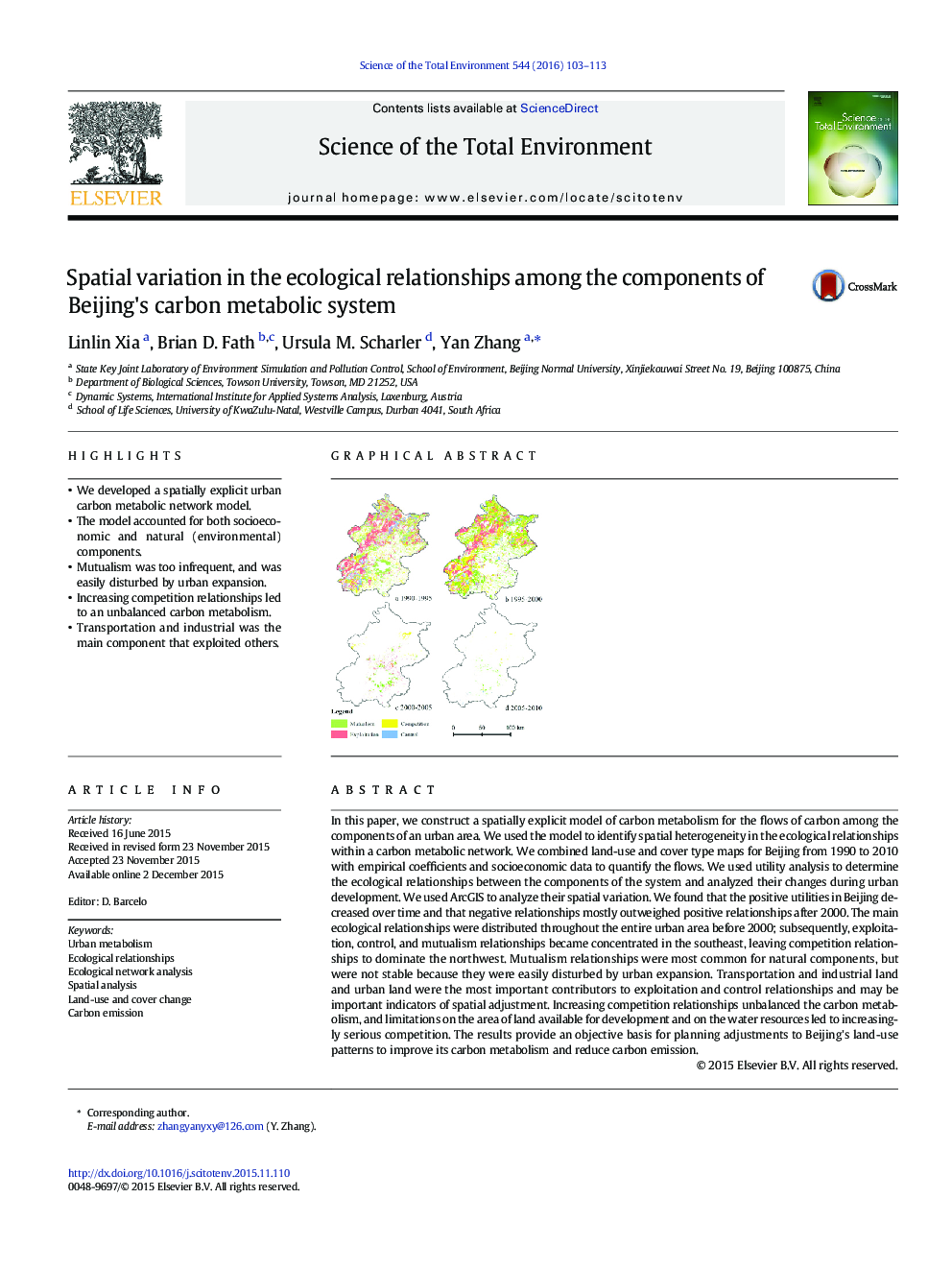| Article ID | Journal | Published Year | Pages | File Type |
|---|---|---|---|---|
| 6323552 | Science of The Total Environment | 2016 | 11 Pages |
â¢We developed a spatially explicit urban carbon metabolic network model.â¢The model accounted for both socioeconomic and natural (environmental) components.â¢Mutualism was too infrequent, and was easily disturbed by urban expansion.â¢Increasing competition relationships led to an unbalanced carbon metabolism.â¢Transportation and industrial was the main component that exploited others.
In this paper, we construct a spatially explicit model of carbon metabolism for the flows of carbon among the components of an urban area. We used the model to identify spatial heterogeneity in the ecological relationships within a carbon metabolic network. We combined land-use and cover type maps for Beijing from 1990 to 2010 with empirical coefficients and socioeconomic data to quantify the flows. We used utility analysis to determine the ecological relationships between the components of the system and analyzed their changes during urban development. We used ArcGIS to analyze their spatial variation. We found that the positive utilities in Beijing decreased over time and that negative relationships mostly outweighed positive relationships after 2000. The main ecological relationships were distributed throughout the entire urban area before 2000; subsequently, exploitation, control, and mutualism relationships became concentrated in the southeast, leaving competition relationships to dominate the northwest. Mutualism relationships were most common for natural components, but were not stable because they were easily disturbed by urban expansion. Transportation and industrial land and urban land were the most important contributors to exploitation and control relationships and may be important indicators of spatial adjustment. Increasing competition relationships unbalanced the carbon metabolism, and limitations on the area of land available for development and on the water resources led to increasingly serious competition. The results provide an objective basis for planning adjustments to Beijing's land-use patterns to improve its carbon metabolism and reduce carbon emission.
Graphical abstractDownload full-size image
